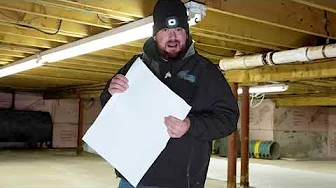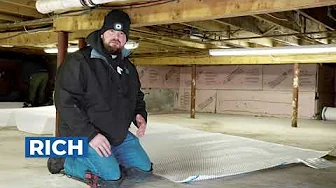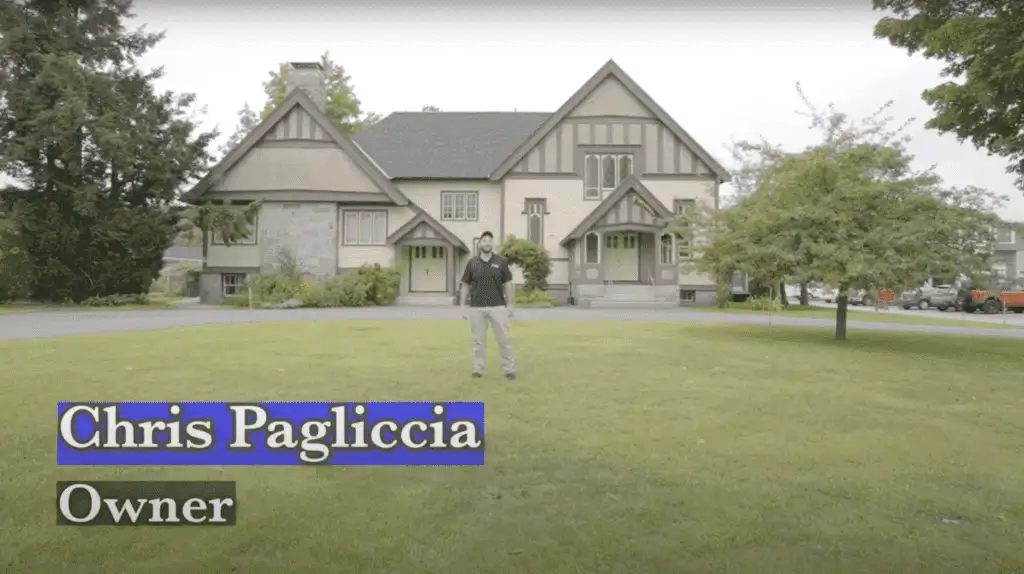Foundation Crack Repair Eliot ME
Foundation cracks can threaten the structural integrity of your home. If ignored, they can lead to more serious damage such as water leaks, uneven floors, and compromised stability. Identifying and addressing cracks early can help protect your home and maintain its value. For homeowners in Eliot, ME, understanding the causes and repair options is essential.
Real People - Real Great Results
Crawl Space Video Playlist
Common Causes of Foundation Cracks
Foundation cracks rarely happen out of nowhere—they’re almost always the result of external stressors that push your home’s structure to its limits. In Eliot, ME, the unique mix of coastal climate and local soil composition makes understanding these culprits even more critical.
- Soil Movement: The ground beneath your home is constantly shifting, even if it’s imperceptible most of the time. Expansive soils, those rich in clay, can swell dramatically when they’re wet and shrink just as quickly during dry spells. This constant push-pull motion creates pressure on the foundation, eventually causing it to crack. In Maine’s freezing winters, this effect is amplified by frost heave, where soil expansion due to freezing can pack a punch.
- Poor Drainage: Water might seem harmless, but when it collects around your foundation because of clogged gutters, inadequate grading, or heavy rain, it’s a slow-moving threat. Excess moisture can erode the soil supporting your foundation or create what’s called “hydrostatic pressure”—basically water pressing against the foundation walls. Both scenarios open the door to cracking.
- Temperature Fluctuations: Maine’s seasons don’t mess around—blistering summers and sub-zero winters make sure of that. Over time, this repeated cycle of heating and cooling can cause your foundation to expand and contract. That kind of constant movement inevitably leads to stress cracks, especially in homes lacking modern insulation or vapor barriers.
- Improper Construction: Not all cracks are about environmental factors. Sometimes, the problem starts from day one. If a foundation isn’t poured to code, lacks adequate reinforcement, or was installed on poorly compacted soil, it sets the stage for future issues. Think of it as a house of cards—any small stressor can lead to visible cracks over time.
Understanding the root cause of foundation cracks isn’t just about peace of mind—it informs the type of repair strategy needed, keeps issues from escalating, and ensures you don’t waste time on temporary fixes.
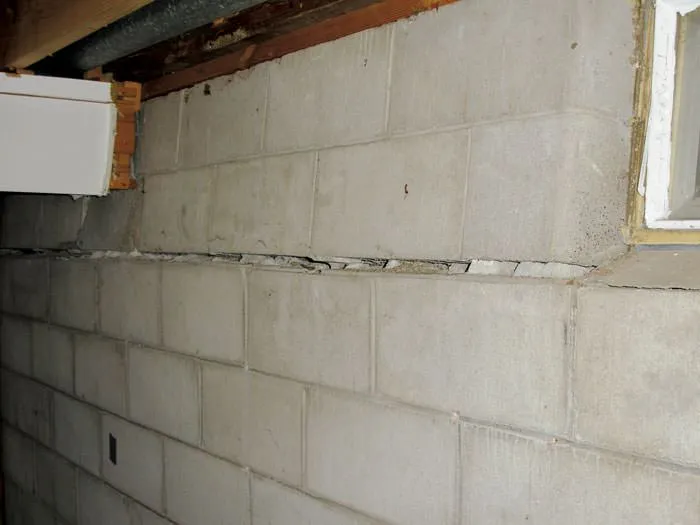
Types of Foundation Cracks
Not all foundation cracks are created equal. Recognizing the type of crack you’re dealing with can be the first step toward understanding the severity of the issue—and deciding how urgently it needs attention.
- Hairline Cracks: These are the paper cuts of the foundation world—small, superficial, and often dismissed. While they may not immediately jeopardize your home’s stability, hairline cracks are worth monitoring. Left unchecked, they can quietly expand, eventually making way for water infiltration or worsening structural issues. Better to nip these in the bud than regret it down the line.
- Vertical Cracks: Think of vertical cracks as the result of a house “settling into itself.” These are pretty common in the early years of a home’s life and, in many cases, don’t raise alarm bells. That said, if the crack widens or starts to leak, don’t just shrug it off. A simple problem today can snowball into something more expensive tomorrow.
- Horizontal Cracks: This is where things get serious. Horizontal cracks often point to external pressure—typically from soil pressing against the foundation. These are the ones that make engineers furrow their brows because they can indicate that a wall is bowing under strain. Procrastinating on horizontal cracks isn’t just risky; it’s an open invitation for structural failure.
- Diagonal Cracks: Diagonal cracks are the middle child—less attention-grabbing than horizontal ones but more concerning than vertical hairlines. They’re often linked to uneven settling or shifting soil, especially if one side of the foundation sinks lower than the other. While diagonal cracks don’t always scream “emergency,” they definitely require a closer look to figure out what’s going on beneath the surface.
Each type of crack tells a story about what’s happening with your foundation. The key is learning to listen, even if the story isn’t one you want to hear.
Signs You Need Foundation Repair
Foundation problems rarely announce themselves with a grand gesture. Instead, they start with small, subtle signs that can easily go unnoticed until they escalate. Knowing what to look for can save you time, money, and possibly some sleepless nights. Here are the top warnings your foundation may need immediate attention:
- Cracks Wider Than 1/8 Inch or Growing Over Time: Not all cracks are created equal. Hairline fractures often fall into the “keep an eye on it” category, but as soon as you notice a crack surpassing 1/8 inch in width or visibly expanding with time, it’s time to act. These wider or progressive cracks may signal shifting, settling, or even structural failure.
- Leaks or Moisture Near Cracks: Finding water where it doesn’t belong is never a good sign, especially near your foundation. Moisture seeping through cracks not only opens the door for water damage and mold but also speeds up deterioration. If Mother Nature has decided to turn your basement into a swamp, it’s a clue that repairs are overdue.
- Doors or Windows That Stick or Won’t Close Properly: A door that refuses to align or a window that suddenly becomes more stubborn than your kids at bedtime might seem like a nuisance, but these could be red flags. When your foundation shifts, it messes with the framework of your home, throwing things out of alignment. If you find yourself resorting to shoulder-checking a door closed, it’s a problem worth investigating.
- Sloping or Uneven Floors: Walking across what feels like the deck of a ship in rough seas is not a feature anyone asks for when buying a home. Sloping or uneven floors often point to larger foundation issues, particularly undue settling or structural compromise. Ignoring it won’t make the problem flat-out disappear—it will worsen.
- Gaps Forming Between Walls and Ceilings: If walls pulling away from the ceiling weren’t unsettling enough, those gaps can also let in drafts, pests, and moisture. It’s not just an aesthetic issue—it’s a structural one. An expanding gap is a cry for professional intervention before the integrity of your home takes a bigger hit.
When it comes to your home’s foundation, vigilance is your best defense. These signs might not all scream “call for help” immediately, but it’s a game of risk you don’t want to play. The sooner you tackle the problem, the less likely you are to face compounded damage—and spiraling costs. Remember, a stable foundation isn’t just about peace of mind; it’s about preserving the place you call home.
Foundation Crack Repair Methods
1. Epoxy Injections
Epoxy injections are a go-to for addressing hairline cracks and minor structural concerns. The process involves injecting a two-part epoxy resin into the crack, effectively bonding the concrete together and restoring its structural strength. This method doesn’t just disguise the issue—it fortifies the integrity of your foundation. Epoxy injections also create a waterproof barrier, protecting against further damage from moisture. However, while they’re highly effective for small, non-dynamic cracks, they’re not ideal for areas prone to ongoing movement.
2. Polyurethane Foam Injections
Think of polyurethane foam as the defense system against water intrusion. Unlike epoxy setups, this method is primarily used to seal cracks where water has already made an unwelcome appearance. The foam expands upon injection, flexing into tight spaces and sealing the intrusion point. While it’s a winning solution for water-related cracks, it doesn’t contribute much to structural reinforcement. It’s moisture control, not heavy-duty support.
3. Carbon Fiber Reinforcement
When cracks are telling you the walls are slightly losing their battle with gravitational pressures—hello, horizontal and diagonal cracks—carbon fiber steps in. Strips of carbon fiber are bonded to the wall, providing incredible tensile strength without adding bulk. Picture an invisible brace holding everything steady. Carbon fiber is fast, cost-effective, and minimally invasive, but it’s only suitable for situations where the movement is already under control.
4. Steel Braces or Wall Anchors
When “slightly bowing” turns into “we’ve got a real problem here,” heavier artillery is required. Enter steel braces and wall anchors. These methods tackle severely compromised walls by providing sheer strength and counter-pressure. Steel braces are installed along the inside of the wall to prevent further inward movement, while wall anchors are installed underground and linked to the inside of the foundation wall, essentially pulling it back into place. It’s not pretty, but it works, especially for significant structural issues.
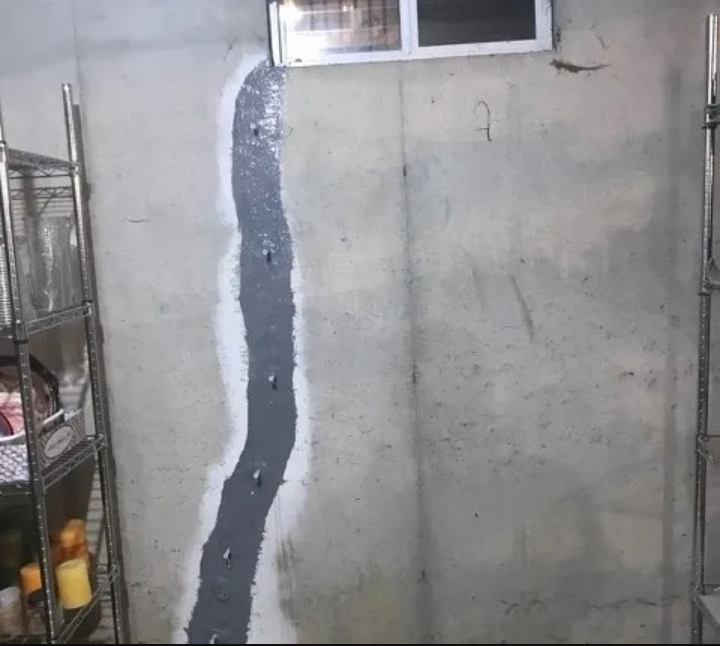
5. Underpinning
If you’re seeing more than just cracks—say, entire sections of your home sloping like a poorly designed miniature golf course—it’s likely time to talk underpinning. This is the heavy-duty, last-resort solution for addressing major settling issues. Underpinning involves installing piers or supports under the foundation to stabilize the home and even lift it back to its original level. It’s invasive, time-intensive, and costs more than the simpler fixes, but for severe cases, nothing offers a more reliable solution.
Each of these repair methods has its strengths, suited to different severities and causes of foundation cracks. The key is to match the solution to the problem and address the issue at its root—because when it comes to your home’s foundation, a band-aid fix won’t cut it.
Preventing Future Foundation Issues
Foundation damage doesn’t happen overnight—it’s usually the result of neglecting small, preventable issues. Keeping your foundation in good condition means being proactive rather than reactive. Here’s how you can stay ahead of the curve:
- Ensure Proper Drainage: Water is a foundation’s worst enemy. Install and maintain a solid drainage system to direct water away from your home. French drains, grading adjustments, and even something as simple as extending downspouts can make a huge difference.
- Maintain Gutters and Downspouts: Clogged gutters spill water directly next to the foundation, causing soil erosion or saturation. Check and clean gutters regularly, especially after heavy storms, ensuring that downspouts extend at least five feet away from the structure.
- Regular Inspections: Walk around your home a few times a year and look for cracking, bulging, or changes in alignment. Even subtle shifts can lead to major issues if unaddressed. The earlier you catch a problem, the easier (and cheaper) it is to fix.
- Manage Vegetation: Those beautiful oaks and maples close to your home? They can wreak havoc underground. Tree roots can pull moisture from soils or, worse, push against your foundation. Keep trees and large shrubs a safe distance away, or consider installing root barriers if planting near the house can’t be avoided.
- Control Soil Moisture: Foundations love stability, and that extends to the soil they sit on. In especially wet seasons, consider ways to channel water away from the property. During drier months, lightly water the soil around your home to keep it from contracting too much, which can cause the foundation to shift.
Preventative maintenance isn’t glamorous, but it’s what protects your investment for the long haul. Each small step—whether it’s ensuring better drainage or trimming back an ambitious root system—adds up to create a strong line of defense for your home.
The Importance of Timely Repairs
When it comes to foundation cracks, procrastination is your enemy. What starts as a small fissure—barely wide enough to slide a credit card through—can quickly spiral into a structural nightmare. Water seeps in, freezes in colder months, and expands, turning that hairline crack into a gaping wound. Add the pressure of shifting soil or the weight of your home constantly bearing down, and you’ve got a recipe for disaster.
Delaying repairs doesn’t just worsen the cracks; it multiplies the risks. A weakened foundation doesn’t only endanger your home—it endangers your wallet. Repairs that might’ve cost a few hundred dollars early on could balloon into thousands if left unaddressed. Worse, serious foundation issues can drop your home’s resale value like a stone, scaring off potential buyers faster than you can say “structural engineer.”
Timely attention isn’t just about damage control—it’s about peace of mind. Catching the problem early ensures your home stands strong, your floors stay level, and your doors don’t start behaving like stubborn puzzle pieces. It’s the difference between treating a molehill or facing a mountain. With foundation cracks, waiting isn’t saving—it’s spending more later.
When To Call a Professional
Sure, a crack that’s “just sitting there” might seem harmless today, but don’t let that fool you. Minor flaws can quietly evolve into major structural headaches. So when should you move from watching and waiting to dialing a pro? Here’s the rule: If you’re unsure, it’s already time.
Cracks wider than 1/8 inch, water seeping through, or a crack that seems to grow every time you blink—these are all red flags that scream for professional attention. The same applies if your doors and windows feel wedged into place or your floors suddenly resemble a ski slope. These aren’t just quirks of an aging house; they’re your foundation’s way of whispering (or shouting) that it’s in trouble.
Calling in a professional isn’t overkill. It’s the smart play. Qualified foundation repair contractors have the tools, expertise, and experience to do what a YouTube tutorial or a patching kit from the hardware store cannot—get to the root cause. They won’t just repair the symptom; they’ll stabilize the structure.
Would you put off stitching a wound that keeps bleeding? Exactly. When in doubt, let an expert take a closer look. Foundation issues don’t fix themselves. They spread, worsen, and multiply. A professional inspection could mean the difference between a manageable repair and a full-scale disaster. Don’t wait for that disaster to knock on your door.

Conclusion
Foundation cracks are not just cosmetic blemishes—they’re warning signs your home may be trying to send you. Ignoring them is a gamble, one that puts both stability and long-term value at risk. Fortunately, these issues are almost always manageable, especially when caught early. By understanding what causes foundation cracks, knowing the types to watch for, and addressing them promptly with proper repair methods, you can ensure your home stays solid, safe, and sound. Procrastination only makes repairs more expensive, so if you’re spotting signs of trouble, don’t overthink it—call in a professional. Your foundation is the literal bedrock of your home; treat it like it matters.
Reviews from Happy Customers
Our top priority is customer satisfaction, and we work closely with clients to understand their unique needs and goals.




